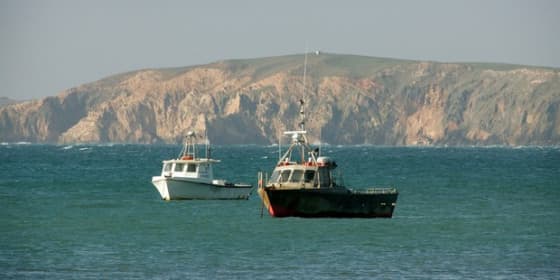Second seabed mining consent application lodged by NZ

Fishing boats on the water at the Chatham Island, source of pic: Herald on Sunday
Source: THe New Zealand Herald
Opponents to seabed mining are preparing for their second battle this year, with the lodging of a marine consent application for a phosphate nodule mining project on the Chatham Rise off the Canterbury coast.
Chatham Rock Phosphate (CRP) yesterday lodged with the Environmental Protection Authority its formal consent application to mine a large area of seabed at the Chatham Rise.
It comes as an EPA-appointed decision making commitee is considering an application by Trans Tasman Resources (TTR) for a mining project off Taranaki, following a lengthy round of hearings and with staunch opposition from environmental groups, iwi and the seafood industry.
CRP is proposing to mine phosphate nodules from the rise, initially within an 820 square kilometre area for which it has a mining permit, and later, potentially a wider 10,192 square kilometre area, dependent on monitoring results and environmental investigations.
The company proposes to mine at least 30 square kilometre of seabed each year to meet its annual minimum production target of 1.5 million tonnes of phosphate nodules.
If its lengthy application, representing four years of work and $25 million in investment, is accepted as complete, it will be publicly notified, beginning a following six-month process expected to lead to a decision in November.
It is the second seabed mining proposal under the Exclusive Economic Zone and Continental Shelf (Environmental Effects) Act 2012.
The marine consent is the only major licence that CRP now needs to begin the project.
CRP managing director Chris Castle said he was confident the application would meet expected standards.
"Our focus has always been two-fold: base the analysis on science and consult with all interested parties to ensure their concerns are addressed through the process," he said.
"Input from both stakeholders and scientists is critical to make sure all the bases are covered."
Mr Castle said results of the analysis and consultation were that the company understood what the environmental impacts were likely to be, "and we can clearly demonstrate how we can minimise and mitigate them".
"We know this project can deliver to its shareholders financially, and to other stakeholders in terms of environmental requirements."
CRP has argued the phosphate mining project would free New Zealand from around $100 million of imports annually of phosphate, a key input for New Zealand farming, and could produce a new source of exports.
Environmental Defence Society chairman Gary Taylor said while the company had kept his group updated throughout the process, it had not yet formed a position on the application.
"Our main concern with the proposal is the extent and range of the plume from the seabed disturbance."
Mr Taylor said more information had also been needed on how the activity would affect the area's benthic environment.
"We don't have enough information to see if the effects are safe or not. I think there are more questions than answers with this project."
The EDS was still to analyse the scientific information in the formal consent application before it would look at lodging a submission.
Deepwater Group, a fisheries industry lobby, has also previously voiced concerns about the Chatham Rise project, with fears it could be "potentially catastrophic" for the marine environment.
Its chief executive, George Clement, was not immediately available for comment this morning.
A spokeswoman for Kiwis Against Seabed Mining (KASM) said the group would oppose the application.
Last year, environmental groups expressed outrage that the Government could not vote to protect deep ocean habitats from the threat of seabed mining at the world's largest conservation congress because it had already issued prospecting and exploration permits to CRP.
New Zealand was one of a handful of nations at the International Union for Conservation of Nature's World Conservation Congress to oppose a motion which sought a broad range of conservation measures to protect three types of deep ocean habitat from the effects of mining.
